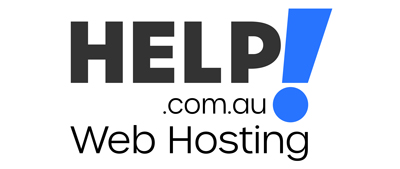This post is about an academic report I just read, on how to restore imbalances of monopolies and rentiers in Australia through various legislation and taxation reform.
So why am I posting this... domains get a mention!
They recommend $100/year registrations to encourage active development and reduce large land bank holdings of domains.
Shame that they make the sweeping generalisation of using the term "cyber squatter".
To me that phase describes someone who registers a domain of another company/trademark/person, with intention to resell it directly to that entity.
"Domain investor" would perhaps be more appropriate for the majority, who are acquiring generic search and keyword domains, that can be repurposed for many different situations.
Anyway, the whole document is an interesting read.
Two of their best arguments about real estate (i.e. that I personally tend to agree with if implemented correctly) are
- limit negative gearing to brand new housing stock
- introduce a broad based land tax instead of stamp duties on real estate sales to smooth out the fluctuations in annual state government revenues, based on volume of property sales activity, and to make it easier for people to move (i.e. reduce transactional costs when buying and selling your home)
(for more active debate along this line of thinking, go to http://www.macrobusiness.com.au)
So... what do they say about domains?
Here is the full excerpt starting page 38 from
http://www.prosper.org.au/wp-content/uploads/2013/12/TRRA_2013_final.pdf
I replaced the two people named in the report with their [initials], out of courtesy to them both.
So why am I posting this... domains get a mention!
They recommend $100/year registrations to encourage active development and reduce large land bank holdings of domains.
Shame that they make the sweeping generalisation of using the term "cyber squatter".
To me that phase describes someone who registers a domain of another company/trademark/person, with intention to resell it directly to that entity.
"Domain investor" would perhaps be more appropriate for the majority, who are acquiring generic search and keyword domains, that can be repurposed for many different situations.
Anyway, the whole document is an interesting read.
Two of their best arguments about real estate (i.e. that I personally tend to agree with if implemented correctly) are
- limit negative gearing to brand new housing stock
- introduce a broad based land tax instead of stamp duties on real estate sales to smooth out the fluctuations in annual state government revenues, based on volume of property sales activity, and to make it easier for people to move (i.e. reduce transactional costs when buying and selling your home)
(for more active debate along this line of thinking, go to http://www.macrobusiness.com.au)
So... what do they say about domains?
Here is the full excerpt starting page 38 from
http://www.prosper.org.au/wp-content/uploads/2013/12/TRRA_2013_final.pdf
I replaced the two people named in the report with their [initials], out of courtesy to them both.
Part IV – The frontiers of monopoly
Cyber squatting
The term ‘cyber squatting’ refers to purchasing a domain name which a related business will one day see value in. This practice has seen domains such as fridges.com.au sell for $20,000, sextoys.com.au for $25,500 and investmentproperty.com.au for $125,000.
On July 1 2007, it was reported that Apple paid at least US$1 million to Michael Kovatch for the transfer of the iPhone.com domain name. Kovatch registered the domain in 1995.
No economic value is added by the middleman acquiring the domain. For a registration price of as little as A$1, any selling price above this is a pure economic rent.
A recent controversy saw the MirandaKerr.com.au domain name taken by cyber squatter [JW]. He claims ownership of 6500 domains in his portfolio worth an estimated $16 million, averaging $2,462 each.
According to Deloitte Access Economics, in August 2011 total domain names registered in Australia reached 2.18 million (Figure 13). Over the year to August 2012, they have grown by 13.8%, now totalling over 3 million.
Reflecting investor interest, [ML], the CEO of NetFleet (a leading Australian domain sales portal) glanced around an informal gathering of cyber squatters at a pub, and claimed those present owned 150,000 domains.
Another monopolist of note in the fast moving internet marketplace is VeriSign, the US company that verifies .com, .net, and .name generic top-level domains. As far as known, this immense monopoly power was handed to the company by the US government for free in the cottage stage of internet development.
“The general public must understand that such a legalised monopoly is bound to deliver
economic rent to those with ‘gatekeeper’ powers.”
In positive signs for IT economics, the initial price to apply for the newly released generic top-level domains (gTLD) will be $185,000, with an annual fee of $25,000.
The $25,000 fee acts as a holding charge, deterring would-be cyber squatters
Calculations
A domain name registration licence levied at an average $100 per domain name would be a starting point for deterring this behaviour.
Similar to other resource rent charges, the licence fee acts as a holding charge, penalising hoarding. Higher rates would be levied on ‘.com.au’ than ‘.net.au’ as the dot coms represent premium Australian web locations. Such a charge will see the price of squatting domains drop as the longer they are held, the more charged. It becomes uneconomic to hold a dormant domain unless revenues are earned, encouraging productive economic use. Taxes on economic rent are unique in that they take
away scarcity rents, rather than pushing up prices.
On 3 million domains, we have calculated the domain industry will deliver $300 million to the government.
In pursuit of simplicity, rather than taxing bona fide users, cyber squatting could be eradicated by requiring domain names not based on a registered business name to be vacated in favour of the registered company or business name owner. The voluntary complaints system at present is reactionary rather than preventative.






